#apple macintosh 128k
Explore tagged Tumblr posts
Text
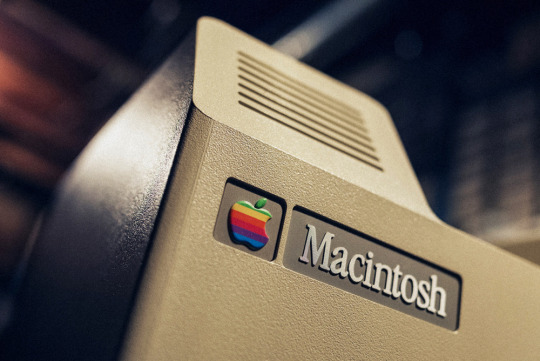
Apple Macintosh 128K personal computer - 1984.
#macintosh#macintosh computer#apple computer#apple#apple macintosh 128k#macintosh 128k#vintage computers#vintage electronics#home computers#personal computers#the 80s
4 notes
·
View notes
Text
decided I'd finally put my objectsona's ref out there!!! yeheeeyy!!!!1!1

#this is NOT mecintosh with limbs this is APPLE not MEEPLE💔💔💔💔#i loveyhe macintohs 128k hruhwvreehrheege#osc#object show community#objectsona#object ocs#object oc#osc art#object show#macintosh
113 notes
·
View notes
Text


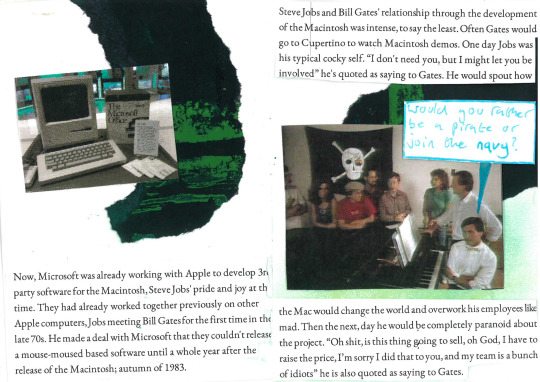

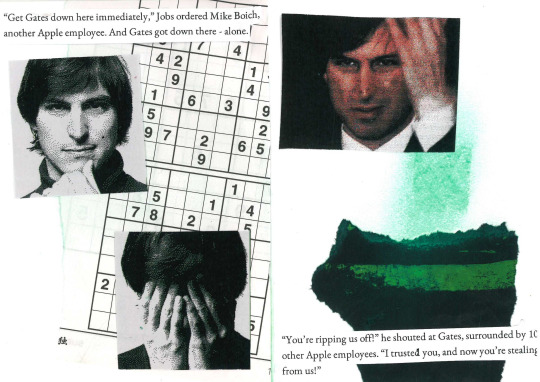
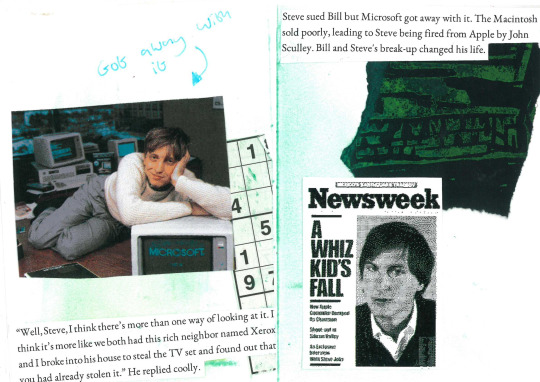

You can also read it here on my website!
#my art#art#microapple#microsoft#apple#xerox#xerox alto#macintosh#macintosh 128k#zine#bill gates#steve jobs
31 notes
·
View notes
Text
hhhh comput.computerwife…….

#computer#original character#digital art#objectum#tech objectum#I’d bone an apple II but I’d make sweet sweet love to a macintosh 128k#i didn’t say that igot possessed#it’s scary out here socrates
14 notes
·
View notes
Text
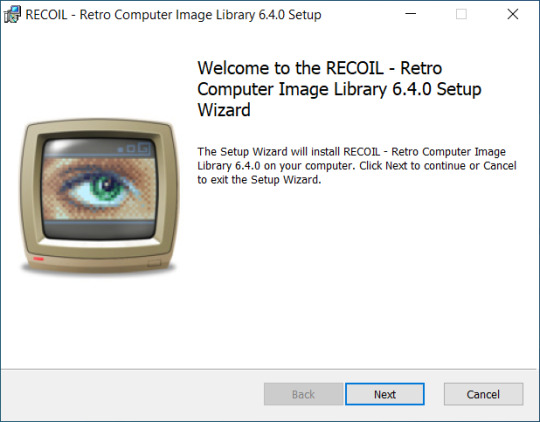
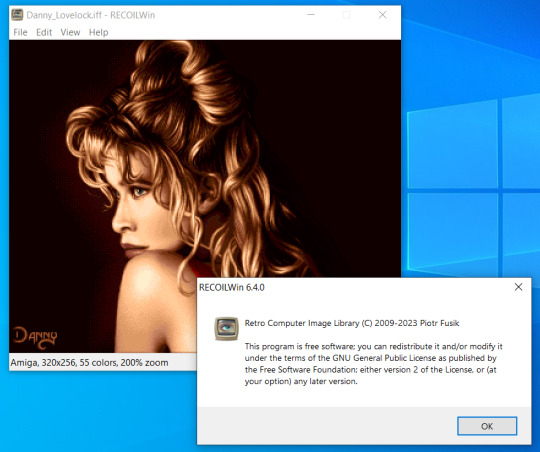
RECOIL 6.4.0 - Retro Computer Image Library decodes Amiga, Amstrad CPC, Apple II, Atari 8-bit, Atari Portfolio, Atari ST/TT/Falcon, BBC Micro, Commodore 64, Commodore 16/116/Plus4, Commodore 128, Electronika BK, FM Towns, HP 48, Macintosh 128K, MSX, NEC PC-80/88/98, Oric, SAM Coupe, Sharp X68000, Tandy 1000, Timex 2048, TRS-80, TRS-80 Color Computer, ZX81 and ZX Spectrum picture formats. The project contains a simple viewer, plug-ins for general-purpose image viewers and editors, and an everything-to-png converter.
#commodore#retro#amiga#c64#vintage#classic#cbm#Amstrad CPC#Apple II#Atari 8-bit#Atari Portfolio#Atari ST/TT/Falcon#BBC Micro#Commodore 64#Commodore 16/116/Plus4#Commodore 128#Electronika BK#FM Towns#HP 48#Macintosh 128K#MSX#NEC PC-80/88/98#Oric#SAM Coupe#Sharp X68000#Tandy 1000#Timex 2048#TRS-80#TRS-80 Color Computer#ZX81
21 notes
·
View notes
Text

Steve Jobs (2015, Danny Boyle)
31/08/2024
#steve jobs#film#2015#danny boyle#aaron sorkin#michael fassbender#walter isaacson#2011#jobs#Joshua Michael Stern#2013#1984#Macintosh 128K#Andy Hertzfeld#Macintosh 512k#Time#Lisa Brennan Jobs#chief executive officer#John Sculley#1988#NeXT#steve wozniak#1998#apple ii#iPod#Apple Lisa#MacPaint#apple inc#kate winslet#Mac
2 notes
·
View notes
Text
Today in Computer History (01/24/2024):
On this day forty years ago, Apple Computers released the first All-In-One PC with a GUI to see mass-market success. The Macintosh (later called the Macintosh 128k or the “thin Mac”) was equipped with an m68k microprocessor, 128 kilobytes of ram, a 9” 512x342px CRT display, and a single 3.5” floppy drive, all housed in a beige box.

The commercial for the Macintosh, directed by Ridley Scott, was titled “1984” and aired during Super Bowl XVIII two days before launch (watch it here!). The computer also came with a keyboard and single-button mouse. It sold over 70,000 units within the first one hundred days of being available.
Read about the benefits of Apple Computers introduction to GUI and more about the Thin Mac here and here!
#today in computer history#01/24#Apple Computers#Macintosh 128k#happy birthday to the thin Mac!#queueputer!
4 notes
·
View notes
Text
The Apple Macintosh was First Released 40 Years Ago: These People Are Still Using The Ageing Computers
— 23rd January 2024 | By Chris Baraniuk, Features Correspondent

The 40-year-old original Apple Macintosh is a museum piece but a few enthusiastic fans still own and use the devices. Credit: Alamy
On 24 January 1984, the Apple Macintosh 128K Personal Computer was unveiled to the world, but 40 years later it still has a loyal following of fans – and users.
David Blatner still has practically every Macintosh computer he ever bought. But one in particular stands out – the first. He remembers the neat way the screen was laid out; the glossy manual; the cassette tape tutorials explaining how to use the machine. It was everything he felt a computer should be.
He had seen early iterations of personal computers as a young child. He used to ride his bicycle to Xerox's Palo Alto Research Center in California where his stepfather worked in the 1970s. There, Blatner got to try early personal computers such as the Alto, which had a graphical interface and a mouse.
"A computer that would work for a single person – that was, in itself, mind-boggling," remembers Blatner, who is now president of CreativePro Network, an online resource for creative professionals.
But it would take another decade before he got one of his own – with the arrival of the Apple Macintosh.
On 24 January 1984, a man called Steve Jobs got up on a stage and heaved a beige box out of a carrying case, shoved a floppy disc into it, and stood back. As the theme from Chariots of Fire played, the word "Macintosh" swept across the tiny computer's screen and a series of monochromatic images flashed up. The captivated audience – of Apple shareholders – went wild.
By today's standards, the tiny screen, boxy form and rudimentary graphics of the original Macintosh look ludicrous. The device was not even the first personal computer. But it was, arguably, the first to change the world. And Steve Jobs’ flashy launch day presentation, at the Flint Center in Cupertino, California, became a template for his many later appearances introducing subsequent Apple hardware – including the iMac and iPhone.
Today, the Mac 128K – so called because it came with 128kb of Random Access Memory, or RAM – is a museum piece. Apple stopped producing the computers in October 1985 and discontinued software support for them in 1998. But a handful of diehard fans still use their Mac 128K computers today – although not without frustrations. The machines are extremely limited due to their small amount of memory. If you want to check out the 128K's specifications, Apple actually lists them on its website.
Even with its diminutive memory, no modem or ability to connect to the internet, and rudimentary graphics, there is a community of avid fans who delight in poring over this seemingly ancient hardware. David Greelish, a computer historian in Florida who is releasing a documentary about the 128Ks predecessor the Apple Lisa this month, notes the ingenuity of the 128K's original circuit board. "It's got everything: ROM, RAM, processor and all the input-output," he says. "Everything there in a beautiful little integrated square board. For 1984, it was amazing."

Steve Jobs wanted the Macintosh to be an affordable personal computer that could be used by anyone. Credit: Getty Images
The original Macintosh can still sell for as much as a modern computer. And for collectors they are a piece of computing history, with the signatures of the team who built it moulded into the plastic of the rear casing.
Some Mac 128K owners, however, use the devices to play quirky games like Frogger or Lode Runner on their treasured machines. All in black and white. The first Macintosh with a colour screen, the Macintosh II, only arrived in 1987.
The Centre for Computing History in Cambridge, England, is one of many collections that feature a functioning 128K. "It’s 40 years old and it’s still going," says Lisa McGerty, chief executive, who remembers the introduction of Macintosh computers as a "massive" improvement for people in the printing and publishing business. Apple's graphical printer, the ImageWriter, was released shortly before the 128K.
McGerty’s colleague Adrian Page-Mitchell, collections officer, says it’s not always easy to keep these decrepit Macintoshes functioning. An earlier 128K that had been on display for a long time at the Centre for Computing History eventually failed and "couldn't be fixed", he says.
Sometimes Macs show their age in strange ways. Steven Matarazzo, a YouTuber and computer collector, says that one of the machine’s capacitors can sometimes degrade over time, meaning that the 128K's screen won’t work properly – it'll appear slightly squished.
Last year, he published a YouTube video about an apparent prototype version of the 128K that turned up. It wasn't working so its owner asked Matarazzo if he could take a look at it. Before long, Matarazzo had the device functioning again. He studied every inch of this early Mac in detail, enthusing about tiny differences between it and the version that made it to market – such as the little Apple logos imprinted on the rubber feet of the prototype. Those weren’t there in the final design. It’s a bit like archaeology for gadgets, he explains.
"You try and put this together – what was the process here, how early was this, how late was this?" he says. "That is, especially to me, what is really cool."
The Apple II and the Apple Lisa, which predated the 128K, were also intended as intuitive, highly capable devices. But each had their own flaws or limitations – the Apple II did not come with a graphical user interface or mouse and the Lisa was much less affordable compared to the 128K, for instance.
“Funnily Enough, The Era Of Individualised Computing Heralded By The Original Macintosh Is, In One Sense, Coming To An End.”
By the time the 128K launched, Blatner was finishing high school and looking for a computer to take to college – something as capable as those machines he'd seen at Xerox years before. His parents took him shopping and they soon found a 128K on display at a shop in downtown Palo Alto.
"It had menus, it had folders, it had a graphical user interface, it had a mouse – it was everything I thought a computer ought to be," he recalls, adding that he still has the receipt. The device cost his parents $2,495 and, at college, Blatner was soon showing it off to his fellow students. They used to queue up behind him in his dorm for a chance to try the computer out. "I have a file cabinet with all these crazy things we were printing out at college," he says. "People just loved it."
It was no coincidence that this technology echoed Blatner’s earlier experiences with computers at Xerox. Jef Raskin, who initiated the Macintosh project – and named the computer after his favourite variety of apple – had also seen the same Xerox technology and been inspired by it. Not only that, in December 1979, Jobs and a handful of Apple engineers toured Xerox multiple times. This gave them ideas that would later shape both the Lisa and Macintosh. In exchange for those impactful demonstrations, Xerox received a large volume of Apple shares, which they quickly sold, losing out on potentially billions of dollars had they held onto them.
Famously, Jobs ended up taking over the Macintosh project started by Raskin after getting kicked off the Lisa team. By this point, Jobs had developed a vision for an affordable personal computer and he decided that the Macintosh would help him make it a reality.
Among the things that made Macintosh different was its presentation. It wasn't just a personal computer, it was a computer with personality. Susan Kare, a graphic designer, came up with cartoon-like icons that practically anyone could understand, and she also contributed to the Macintosh’s collection of digital fonts.

The Macintosh 128K is still has a special place in the hearts of early Apple employees who worked at the company as it was being developed. Credit: Getty Images
But so much about the Mac and the splash that it made was fuelled by marketing and hype. Jason Scott, a filmmaker and historian of technology who works at the digital archive non-profit Internet Archive, remembers seeing the original TV ad for the Mac 128K as a teenager. The bizarre short film was directed by Ridley Scott and depicted a dystopian future inspired by the novel 1984. What would save us all from that dark future? The Mac 128K, of course.
"That commercial began playing and it seemed like it was completely from Mars," recalls Scott. "Something was going on but I didn't quite understand it."
Not long after, when Scott tried a Macintosh for the first time, he was enraptured. It was, he says, like looking through a telescope to another world.
And yet the Mac was not as big a success as some expected. "It didn’t sell to businesspeople like Steve thought it would," remembers Andy Cunningham, who worked on the marketing campaign for the device. "It’s ultimately why Steve got fired from Apple." Jobs left in 1985 but returned to the company in the late 1990s.
It took until 1988 before Apple had sold enough Macintosh devices, including various subsequent iterations of the original Macintosh, to finally eclipse sales of the Apple II, which had come out way back in 1977.
But Macs did appeal to many, especially young people and those working in creative roles.
Cunningham and her colleague Jane Anderson helped to pump up hype over the original Macintosh by offering individual journalists six hours each with people at Apple, including Jobs, and giving them multiple demonstrations of the machine to ensure that they understood what they were writing about. "I watched them all play with this computer and their eyes just glistened," says Cunningham.
It would be wrong to suggest that the Mac 128K was a perfect computer. As mentioned, it had severe limitations and was hardly a commercial hit at first. But it left an indelible mark. The rise of personal computing was undoubtedly a watershed moment. The ridiculously oversized, cabinet-like computers that you could only plug into via a clunky terminal now seemed hopelessly antiquated. Now we had portable, cheerful, accessible machines that almost anyone could use.
Funnily enough, the era of individualised computing heralded by the original Macintosh is, in one sense, coming to an end. In the 21st Century, we are becoming ever more dependent on server farms, cloud processing, big data, and networked systems. Other people’s computers are increasingly indispensable for running our own.
"We are now on the other side," reflects Blatner, who has kept almost every Macintosh he ever bought. "We did need this 40-year period of enabling people, of empowering people."
1 note
·
View note
Text
Every time macOS bugs me about activating Apple Intelligence, I just get the urge to

Which is kinda ironic since this GIF comes from an old 1980s Macintosh 128K ad where Apple touts how their computers won't "frustrate you" like PCs do...
7 notes
·
View notes
Note
*chucks an Apple Macintosh 128k at you*
THINK FAST CHUCKLENUTS
Big things are coming in the future!!!!!!!!!!!
GAH- VHAT?!
10 notes
·
View notes
Text

MacCharlie advertisement, 1985, scan sourced from vintagecomputing.com
Manufactured and released by Dayna Communications in 1985, the MacCharlie was a hardware add-on for the original Macintosh 128K and the Macintosh 512K that enabled users to run DOS software designed for the IBM PC on their Macintosh.
It did so by literally being an entire IBM PC compatible with an 8088 microprocessor, 256 KB RAM, and a 360 KB floppy disk drive. The RAM was upgradeable to 640 KB and a second disk drive was also available, with the MacCharlie Plus including 640 KB RAM and two floppy drives as standard.
The MacCharlie also included a keyboard extension that added a number pad and function keys, as the Macintosh keyboard lacked a numpad, function keys, or arrow keys (a deliberate choice by Apple who thought that developers would just port their old software to the Macintosh rather than developing software around the GUI paradigm if they had included those keys).
The MacCharlie connected to the Macintosh via a 9-pin serial cable and performed all DOS operations itself (obviously), with the Macintosh serving as a terminal for the MacCharlie. This required you to run the MacCharlie application software that was included on a 3.5 inch floppy disk for your Macintosh along with MS-DOS, which was also (naturally) included on a 5.25 inch floppy disk for the MacCharlie.
While the MacCharlie software included the ability to transfer files from itself to the Macintosh (and vice versa), you could not run a DOS program and a Macintosh program simultaneously (the System Software, later renamed to Mac OS, for the Macintosh did not support the running of multiple programs simultaneously until the release of the MultiFinder extension in 1987, with the feature eventually becoming integrating into the operating system with System 7 in 1991).
The MacCharlie software was also limited to running text-based DOS software only.
(Oh and if you're curious about the name 'MacCharlie', it was in reference to the advertising campaign for the IBM PC featuring Charlie Chaplin's Little Tramp character)
3 notes
·
View notes
Text

Furries? But computers? Sure (Macintosh 128k, apple II, iMac G1)
#art#oc art#my art#I could start doing oc tags why not#oc:Gala#oc:Mac#oc:Honey#good thing for uh organization#not completely a fandom blog lol#robot oc#furry
2 notes
·
View notes
Photo

SEALED Guided Tour of Macintosh Apple Computer Mac 128K Picasso Cassette 1984 | eBay
0 notes
Text

RECOIL 6.4.4 - A viewer of pictures in native formats of 20th century computers: Amiga, Amstrad CPC, Apple II, Atari 8-bit, Atari Portfolio, Atari ST/TT/Falcon, BBC Micro, Commodore VIC-20, Commodore 64, Commodore 16/116/Plus4, Commodore 128, Electronika BK, FM Towns, HP 48, Macintosh 128K, MSX, NEC PC-80, NEC PC-88, NEC PC-98, Oric, Psion Series 3, SAM Coupé, Sharp X68000, Tandy 1000, Timex 2048, TRS-80, TRS-80 Color Computer, Vector-06C, ZX81 and ZX Spectrum.
#commodore#retro#amiga#c64#vintage#classic#viewer#pictures#native formats#Amstrad CPC#Apple II#Atari 8-bit#Atari Portfolio#Atari ST/TT/Falcon#BBC Micro#Commodore VIC-20#Commodore 64#Commodore 16/116/Plus4#Commodore 128#Electronika BK#FM Towns#HP 48#Macintosh 128K#MSX#NEC PC-80#NEC PC-88#NEC PC-98#Oric#Psion Series 3#SAM Coupé
7 notes
·
View notes
Text

Steven Paul Jobs
SPJ: Smart Products Justified
February 24, 1955 - October 5, 2011
Remembering Steve Jobs.
—
20,677 days
2 + 0 + 6 + 7 + 7
= 22
2,953 weeks
2 + 9 + 5 + 3
= 19
679 months
6 + 7 + 9
= 22
56 years and 223 days
5 + 6 + 2 + 2 + 3
= 18
56 years
5 + 6
= 11
—
TOTOo "22" na hinahangaan NATIN "19" ang kanyang karisma at talento, at iTUTUloy "22" ito ng ATING "18" magagaling na Apple CEO at "11" na Apple senior executives.
—
22 + 19 + 22 + 18 + 11
= 92
29
1955 + 29
= 1984
—
January 24, 1984 was a major highlight of Steve Jobs's career with the introduction of the original Macintosh 128K. This groundbreaking event marked as a turning point in the history of personal computing, setting the stage for Apple's future innovations.
—
Photo:
CTTO
—
#PassionForGreatness
0 notes
